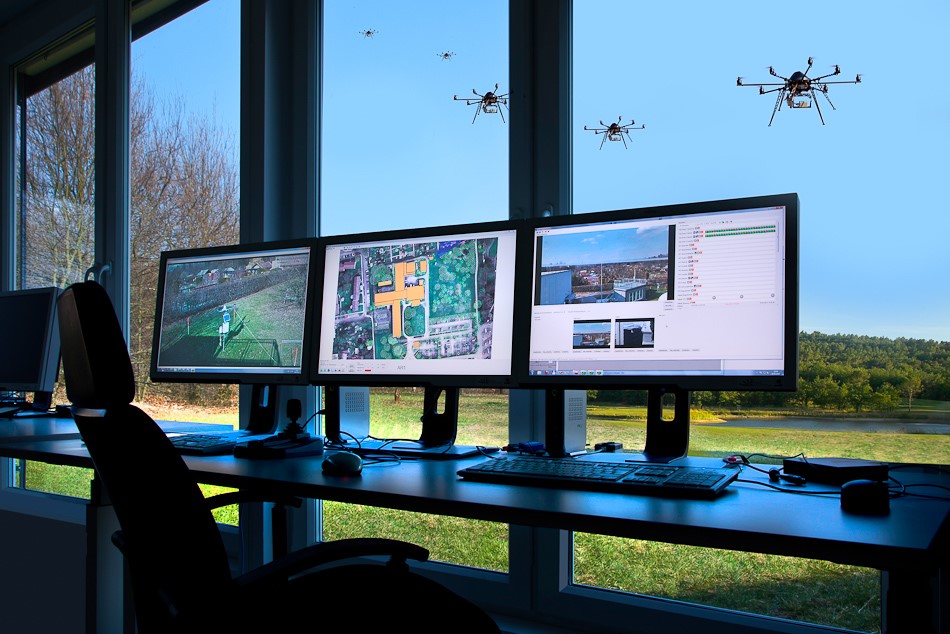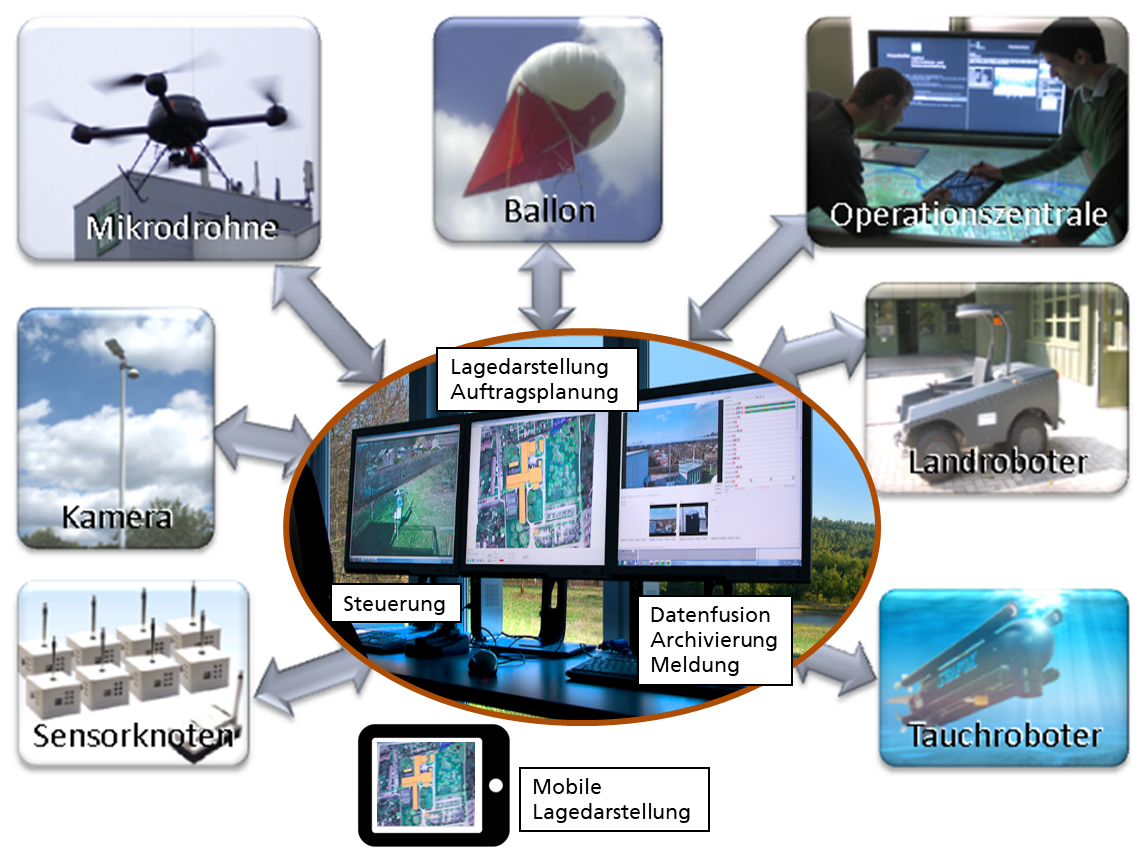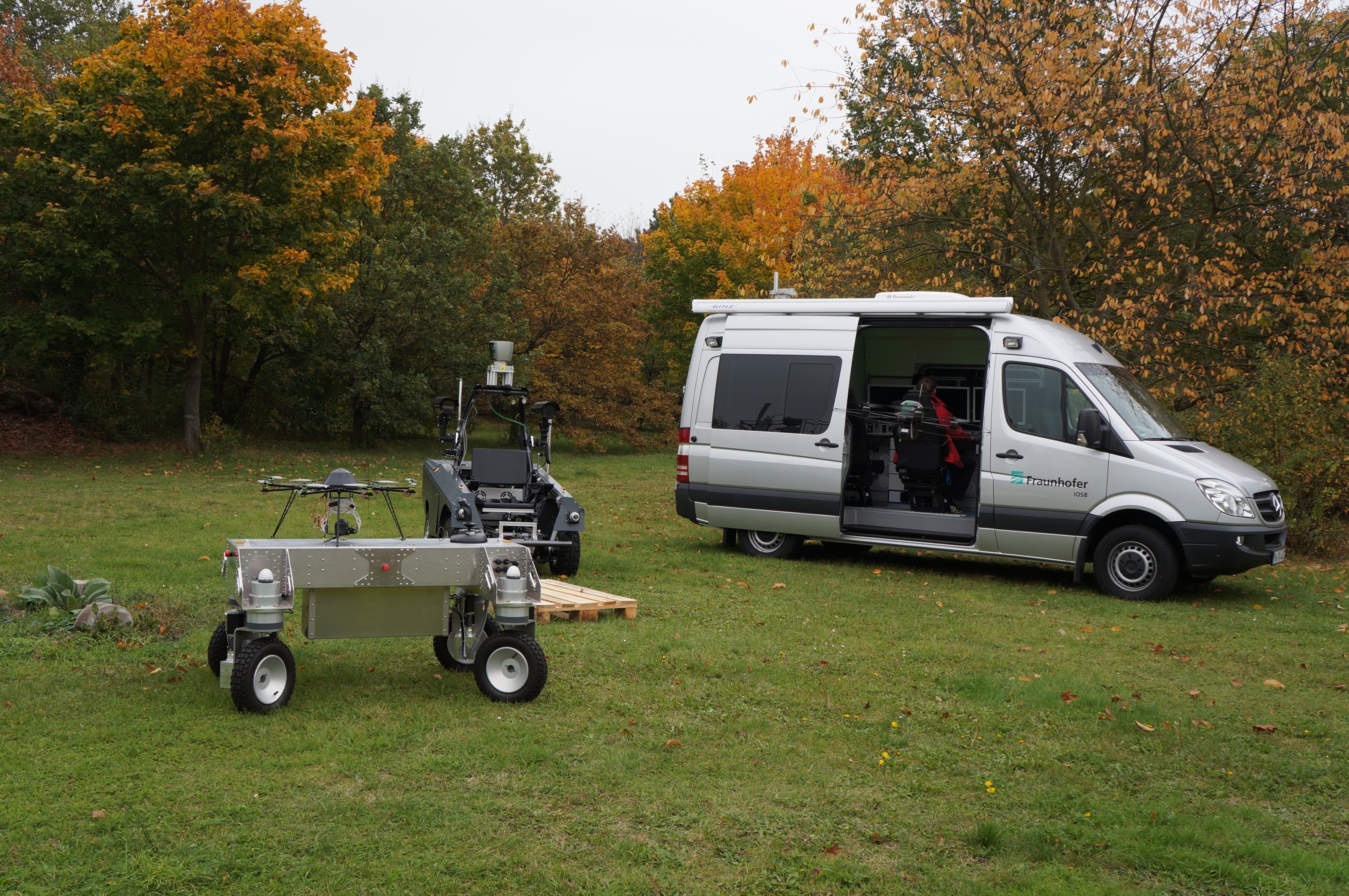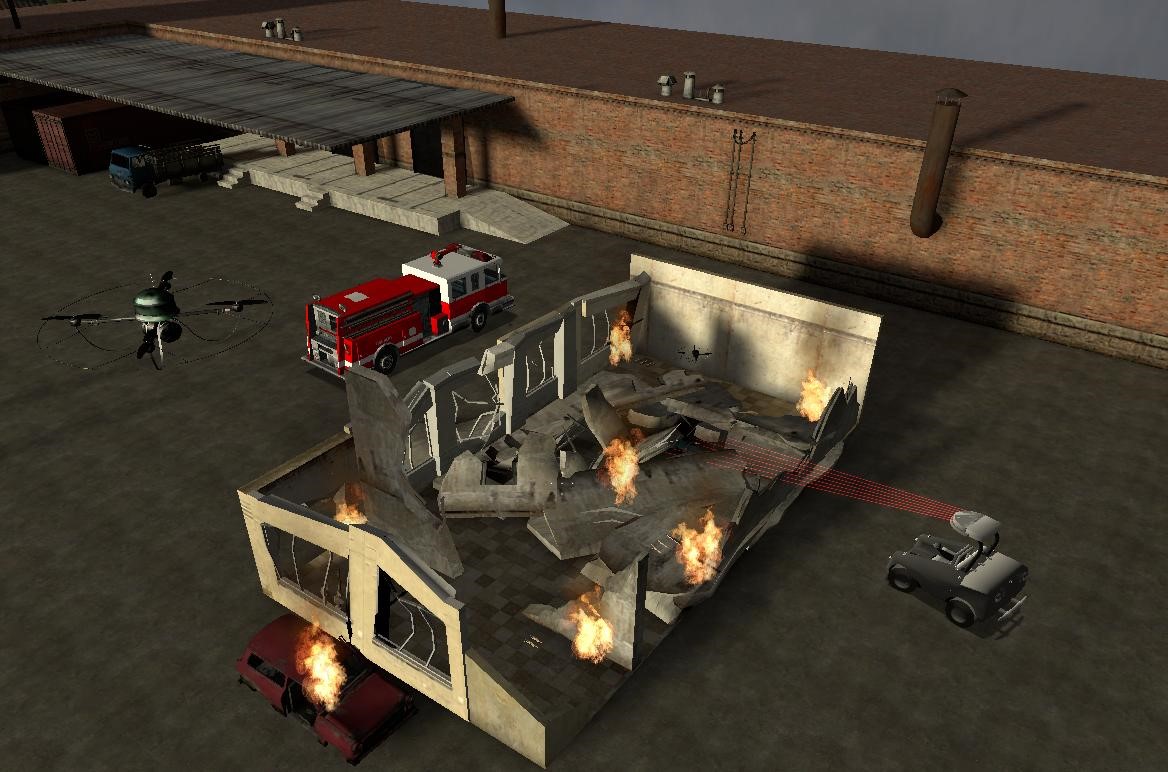Challenges
Complex reconnaissance and surveillance tasks often cannot be solved with stationary sensors alone or with just one mobile sensor carrier (e.g., a drone). If several mobile systems are used simultaneously in a scenario, conventional individual applications quickly reach their limits. On the one hand, each mobile system requires its own monitoring, control and appropriately trained operators; on the other hand, it is difficult to link the sensor and status data of the individual systems and evaluate or archive them synchronously.
Solution
To solve such problems, Fraunhofer IOSB developed the integration platform AMFIS, which can manage groups of heterogeneous mobile systems and quickly provide a comprehensive situation picture in a complex environment using multiple stationary and mobile sensors. By means of the generic control station of AMFIS, various air, land and water vehicles (sensor carriers), as well as stationary ad-hoc sensor networks and heterogeneous sensors can be uniformly controlled and coordinated.
Due to the generic approach, the system is multi-sensor capable and can be equipped with electro-optical or thermal imaging cameras, with motion detectors, acoustic, chemical, radio or radiation sensors, etc., depending on the mission objective. It does not matter whether the sensors are mounted on mobile sensor carriers or installed stationary. AMFIS has a modular design and can be scaled as required and adapted to application-specific requirements by selecting suitable modules or integrating new ones.
Open interfaces, based on standards, ensure that further system types are interoperable and easy to integrate, and that the collected data can be delivered to command or evaluation systems in real time (even while the mobile systems are in motion).
 Fraunhofer Institute of Optronics, System Technologies and Image Exploitation IOSB
Fraunhofer Institute of Optronics, System Technologies and Image Exploitation IOSB 


